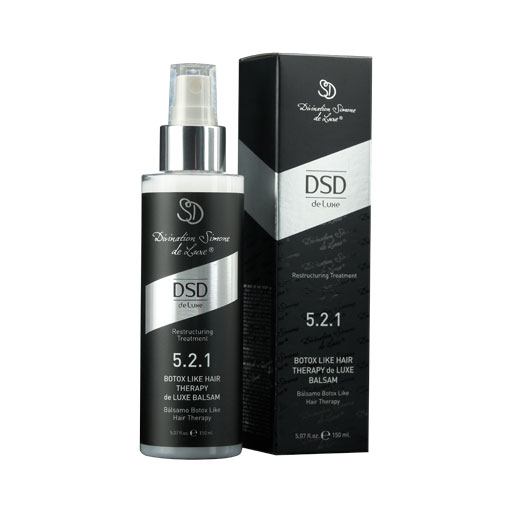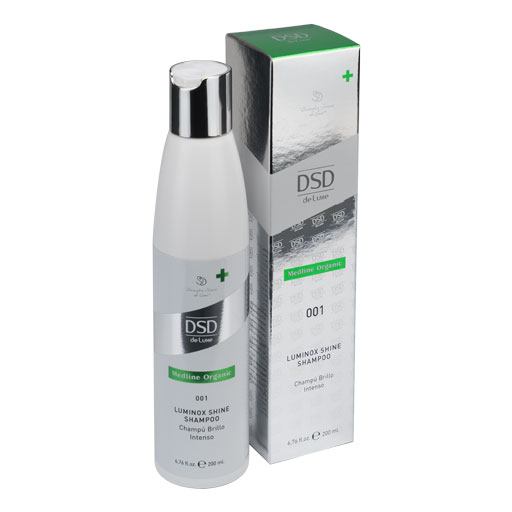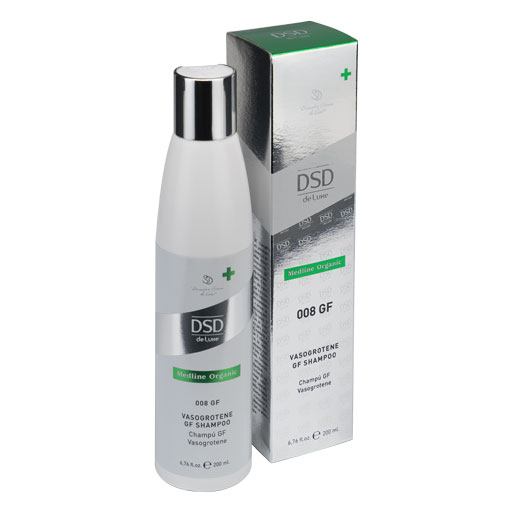There are generally two situations where people want to accelerate hair growth:
- To change their appearance by growing out their hair.
- When hair becomes weaker, sheds, or thins.
In both cases, proper hair care can stimulate growth and awaken “dormant” hair follicles. Effective products and the guidance of a cosmetologist (trichologist) can assist in this process.
What Speeds Up Hair Growth?
To promote faster hair growth at home, focus on a high-quality care routine, known as the "beauty ritual":
Step 1: Cleansing phase with an appropriate shampoo.
Step 2: Moisturizing phase with a conditioner or balm.
Step 3: Nourishing phase with a hair mask.
Step 4: Finishing care with a spray, cream, serum, or balm for heat protection and to keep ends smooth and shiny.
Let Your Hair Grow as Long as Possible!
To grow your hair as quickly as possible, it helps to understand its growth potential. Without a realistic expectation, it’s easy to feel discouraged.
- Daily: 0.4 mm
- Monthly: 1 cm
- Yearly: 12 cm
It's clear that extremely short hair won’t grow to long lengths in a single month, and factors can hinder growth. Only a stylist can instantly lengthen hair using root extensions.
Interesting Fact: Women’s hair grows faster than men’s, with growth increasing in summer due to improved blood circulation from warmer air.
Create the ideal conditions for optimal growth—up to 15 cm annually—by minimizing external damage and consulting a professional to rule out chronic conditions.
What Influences the Speed of Hair Growth?
Before considering ways to accelerate hair growth, it’s helpful to review factors that may slow it down. Key factors include:
- Genetics: The maximum length and growth rate are coded in your DNA, so evaluating your relatives’ hair condition can provide insights.
- Health Issues: Digestive, hormonal, or immune system conditions may impact hair health and cause hair loss.
- Stress: High stress diverts nutrients from hair and scalp.
- Nutrition: Poor diet leads to nutrient deficiencies and stunted growth.
- UV Exposure and Temperature Fluctuations: These weaken the scalp’s protective barrier.
Understanding these factors can help in managing expectations and creating optimal growth conditions.
Hair Growth Tips!
We share the most effective methods and helpful advice to help your hair grow faster at home.
Hair care is essential, from washing to protection. Select the right shampoo for your scalp type to support natural growth, without drying or leaving residue. Use lukewarm water, no hotter than 50°C, as hot water overstimulates oil glands. After washing, always apply conditioner to seal the cuticle and protect the hair. Leave-in products nourish the ends, prevent split ends, and shield from UV rays, humidity, and sudden temperature changes. Apply these to damp hair for the best effect.
Avoid Bad Habits!
Smoking and alcohol constrict blood vessels, slowing nutrient delivery to hair roots. Coffee and tea have similar effects, so limit consumption to two or three small cups per day. Another habit that harms hair is going to bed with wet hair. Wet strands are easily stretched and damaged, and rubbing against a pillowcase, even silk, can cause breakage. Instead, let hair air dry overnight or use a blow-dryer with a protective treatment applied beforehand.
Balanced Nutrition
To encourage the healthy growth of hair on your head, nails on your hands, and a strong sense of self, maintain a nutritious, well-balanced diet rich in the following micronutrients:
- B Vitamins: spinach, oats, nuts, potatoes, liver, plain yogurt.
- Vitamin C: berries, fruits, bell peppers, cabbage, leafy greens.
- Vitamin A: caviar, carrots, eggs, fatty fish.
- Zinc: seafood, beans, red meat, lentils, cereals.
- Iron: organ meats, red meat, broccoli, seaweed, pumpkin seeds.
- Chromium: fish, beef liver, hazelnuts, pecans, dried fruit, buckwheat.
- Selenium: tuna, pistachios, Brazil nuts, shellfish.
- Copper: avocados, peanuts, cocoa powder, grains.
- Protein: chicken, cottage cheese, nuts, legumes.
Trimming Split Ends
If you’re not in the mood for a full haircut, it’s still essential to tackle split ends. Eventually, damaged ends need trimming—not to boost growth, but to prevent splits from spreading higher up.
Tip: trim 1-2 cm every three to four months. This allows for about 10 cm of growth per year. It’s best to get trims in a salon, where they use special scissors that don’t dull easily. If you get similar scissors for home use, remember they need regular replacement.
Stress Management
Managing stress isn’t easy, but it’s essential for overall health, including hair growth. Mental resilience impacts your whole body’s well-being. Ensure enough sleep, and set aside 10-30 minutes daily to use stress-relief techniques like:
- Exercise and yoga
- Nature walks
- Meditation
- Aromatherapy
- Breathing exercises
Indulge in a Scalp Massage
A massage can help your hair grow more quickly—within natural limits—by enhancing local blood circulation and follicle nourishment, similar to how hair grows faster in warmer months. This strengthens roots, reduces hair loss, and promotes growth. Try massaging your scalp during your shower, starting from the forehead and temples to the crown, then moving from the nape up, using gentle, gliding motions.
Another way to improve scalp circulation is with a quality comb that meets these standards:
- Teeth are gentle on the scalp and don’t snag hair.
- Made from plastic, dense wood, or silicone.
- Doesn’t cause static or build up electricity.
For hair below the shoulders, use a wide-tooth comb or detangling brush; any comb works for short hair. Turn this into a wellness ritual by applying 4.4.1 Royal Jelly + Green O₂ to the hair’s lower half, detangling gradually, and finishing with a relaxing scalp massage.
Heat Protection
Always apply heat protection before blow-drying, curling, or straightening. By protecting the lengths, you can reduce split ends and extend the time between haircuts. Use 5.2.1 Botox Like Hair Therapy Balm, which also protects against UV damage.
Avoiding Heat
If blow-drying is necessary, try skipping straighteners. Tight braids and updos can cause breakage, so wear hair in loose styles like low ponytails or buns.
Seek Help from a Trichologist
If home care isn’t enough, consult a trichologist for tailored advice. A professional can assess causes and recommend effective treatments.






